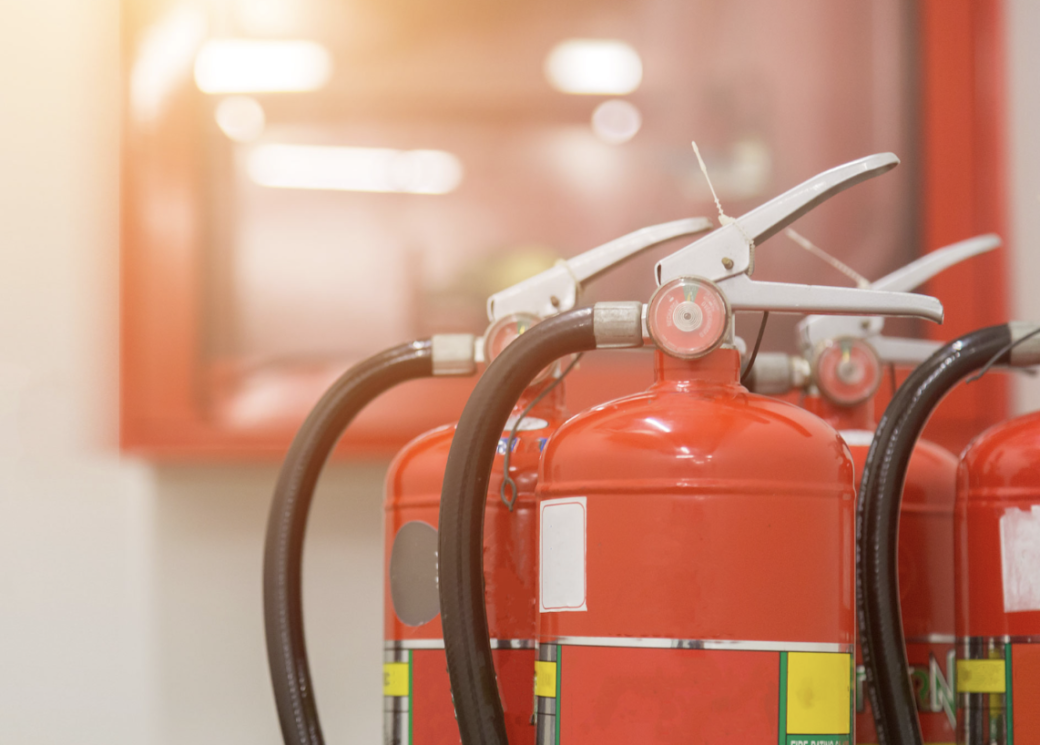
The As, Bs, & Cs of Fire Extinguishers
A fire extinguisher is often the first line of defense when fighting fires in the workplace.
Portable, easy to use, and effective, it’s no wonder why OSHA requires these lifesaving devices in all United States workplaces.
However, purchasing a fire extinguisher without doing your research could have devastating consequences.
Fires have various chemical compositions, as do their corresponding fire extinguishers: Classes A, B, C, D, and K.
Using the wrong type of fire extinguisher, even for a small fire, could have devastating consequences.
That’s why it’s so crucial that you assess your particular risks before purchasing a fire extinguisher.
Follow this comprehensive guide to learn everything you need to know about the different classes of fire extinguishers.
Class A: Ordinary Combustibles
Class A fires
When you think of home or workplace fires, the first thing that comes to mind is likely common combustibles, such as:
- – Wood
- – Cloth
- – Paper
- – Rubber
- – Plastics
These are called Class A fires and are the most common type of fire.
Therefore, you can use the most common portable fire extinguisher.
Class A fire extinguishers
Most fire extinguishers, including water, film-forming foam, and chemicals, can treat Class A fires.
Class A fire extinguishers have the letter “A” on their labels. You will often see them in homes and offices.
You should not use Class A extinguishers on fires involving flammable liquids, electrical equipment, or metals. They may not be effective and could even pose additional risks.
Class B: Flammable Liquids and Gasses
Class B fires
Class B fires are started by flammable and combustible liquids, such as:
- – Petroleum greases
- – Tars
- – Oils
- – Oil-based paints
- – Solvents
- – Lacquers
- – Alcohols
- – Flammable gases
Class B extinguishers
These flammable liquid and gas fires require specifically designed Class B fire extinguishers. Class B fire extinguishers smother the flames and interrupt the chemical reaction necessary for combustion. Common extinguishing agents for Class B fires include dry chemical powders, carbon dioxide (CO2), and foam.
The letter “B” on their labels identifies Class B extinguishers. These extinguishers are crucial in settings where flammable liquids are present, such as industrial facilities, laboratories, and commercial kitchens.
Class C: Energized Electrical Equipment
Class C fires
Malfunctioning electrical equipment causes Class C fires. Class C fires are most commonly started by:
- – Appliances
- – Wiring
- – Circuit breakers
- – Outlets
Class C fire extinguishers
Class C fire extinguishers are specifically designed to combat electrical fires safely.
They typically contain non-conductive extinguishing agents like carbon dioxide (CO2) or dry chemical powders that displace oxygen, suffocating the fire.
Before using a Class C fire extinguisher, you must first turn off or unplug any electrical equipment if possible. Then, aim the extinguisher at the bottom of the fire.
The letter “C” on their labels identifies Class C extinguishers.
Important note: Trying to extinguish a Class C fire with water or conductive materials can be extremely hazardous. It may result in electric shock.
Only attempt to extinguish a Class C fire if you have the proper fire extinguisher. If a Class C fire arises and you do not have the correct extinguisher, call the fire department immediately and exit the building.
Class D: Combustible Metals
Class D fires
Combustible metals ignite Class D fires, most commonly in industrial settings.
These fires are less frequent, but they can be very dangerous. They produce extreme heat and have the potential to cause explosions.
Common fuel sources for Class D fires include:
- – Magnesium
- – Titanium
- – Zirconium
- – Sodium
- – Lithium
- – Potassium
Class D fire extinguishers
Because Class D fires burn at extremely high temperatures, they can react violently with water or other common fire-extinguishing agents. Class D fire extinguishers use dry powder agents made of unique materials like sodium chloride or graphite. These elements smother the fire and prevent the metal from reacting with oxygen.
Class D extinguishers, labeled with “D,” are essential for industries and labs dealing with combustible metals.
Class K: Cooking Oils
Class K fires
Class K fires originate from cooking oils and fats like vegetable oils or grease.
Class K fires are most commonly found in commercial kitchens, food processing facilities, and home kitchens.
Class K Fire Extinguishers
Class K fire extinguishers contain a special potassium acetate-based extinguishing agent that reacts with cooking oil to create a soapy foam. This foam rapidly cools and suppresses the flames, forming a barrier to prevent re-ignition. A vital tool in commercial cooking environments, Class K extinguishers are identified with the letter “K” on their labels.
Which Fire Extinguisher Is Right for You?
Having the proper fire extinguisher and knowing how to use it saves lives. In fact, 94% of the time a portable fire extinguisher is used, it puts out the fire in around two minutes, according to Compliance Training Online.
 Whether you manage a restaurant or a manufacturing plant, the fire risk is ever-present and varied.
Whether you manage a restaurant or a manufacturing plant, the fire risk is ever-present and varied.
At Kistler O’Brien Fire Protection, we know the importance of tailoring a fire prevention system for each individual client.
Our fire prevention experts are standing by to thoroughly evaluate your business and create a custom fire safety solution to protect your employees and business.
Contact Kistler O’Brien Fire Protection to protect your business in Pennsylvania, New Jersey, or Delaware.

